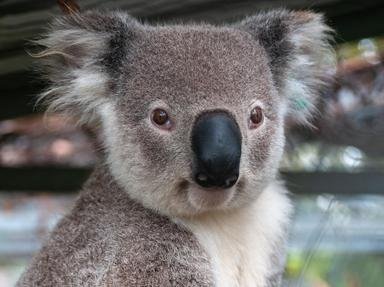Quiz Answer Key and Fun Facts
1. The bilby's back legs are similar to those of which iconic Australian mammal?
2. When the southern marsupial mole comes to the surface, it produces a very distinctive track that leaves how many parallel grooves in the sand?
3. The spinifex hopping mouse can produce urine that is virtually solid.
4. The Western quoll is most active during which part of the day?
5. The birth of the Australian nation through Federation which occurred in 1901 also coincided with which event in the existence of the pig-footed bandicoot?
6. The plant on your left is spinifex, the ideal shrub under which the mala prefers to burrow to hide from the intense desert heat. With this in mind, what sort of creature does the mala resemble?
7. Why do kangaroos hop?
8. The Australian dingo is a primitive dog that evolved from the Plains wolf of India. Does it communicate mainly by barking?
9. The Leporillus conditor gets its more common name from which material that it uses to build its nests?
10. The little red flying fox plays which important role within its environment?
Source: Author
pollucci19
This quiz was reviewed by FunTrivia editor
Tizzabelle before going online.
Any errors found in FunTrivia content are routinely corrected through our feedback system.


